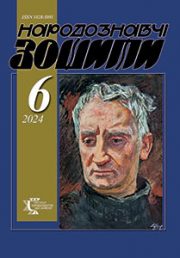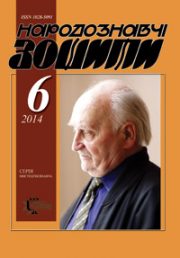The Ethnology Notebooks. 2018, 3 (141), 630-634
UDK 792.031.1″632″:393]:159.964.2
DOI https://doi.org/10.15407/nz2018.03.630
THE BEGINNINGS OF THE DRAMA ARTS: DISTINCT OBSERVATIONS REGARDING PALEOPSYCHOLOGY
Hoschitskyi Artem, younger researcher
of the State Historical and Cultural Reserve “Tustan”,
82612 Urych, Skole district, Lviv region, Ukraine.
Contacts: e-mail: artem.hoshchitskyy@ukr.net
Abstrakt. Origins of the dramatic arts and puppetry action are reviewed in the context of primary irrational manifestations — the Upper Paleolithic art and funeral rites. These phenomena are particularly correlated with the psychophysiology of figurative perception and classical psychoanalysis-inspired interpretation of other psychological phenomena, i. e. dreams and games. We assume that they appeared out of the human need for the inner, alternative reality, and served as a peculiar psychological protective mechanism, which had actualized the human basic reserves. Lack of the reserves mentioned could lead straight to mankind’s extinction.
Keywords: dramatic arts, Upper Paleolithic art, funeral rites, classical psychoanalysis.
Received 21.02.2018
References
Zalizniak, L. (ed.). (2005). Arkheolohiia Ukrainy: Kurs lektsij Kyiv: Lybid’ [in Ukrainian].
Elinek, Ja. (1983). Bol’shoj illjustrirovanyj atlas pervobytnogo cheloveka. Praga: Artija [in Russian].
Semenov, V.A. (2008). Pervobytnoe iskusstvo: Kamennyj vek. Bronzovyj vek. Sankt-Peterburg: Azbuka-klassika [in Russian].
Formozov, A.A. (1980). Pamjatniki pervobytnogo iskusstva na territorii SRSR. Moskva: Nauka [in Russian].
Frejd, Z. (2003). Puti obrazovanija simptomov. In Vvedenie v psihoanaliz. Lekcii. (Lekcija 23, pp. 346—364). Moskva, [in Russian].
Frejd, Z. (2003). Peresmotr teorii snovidenij.In Vvedenie v psihoanaliz. Lekcii. (Lekcija 29, pp. 449—470). Moskva [in Russian].







